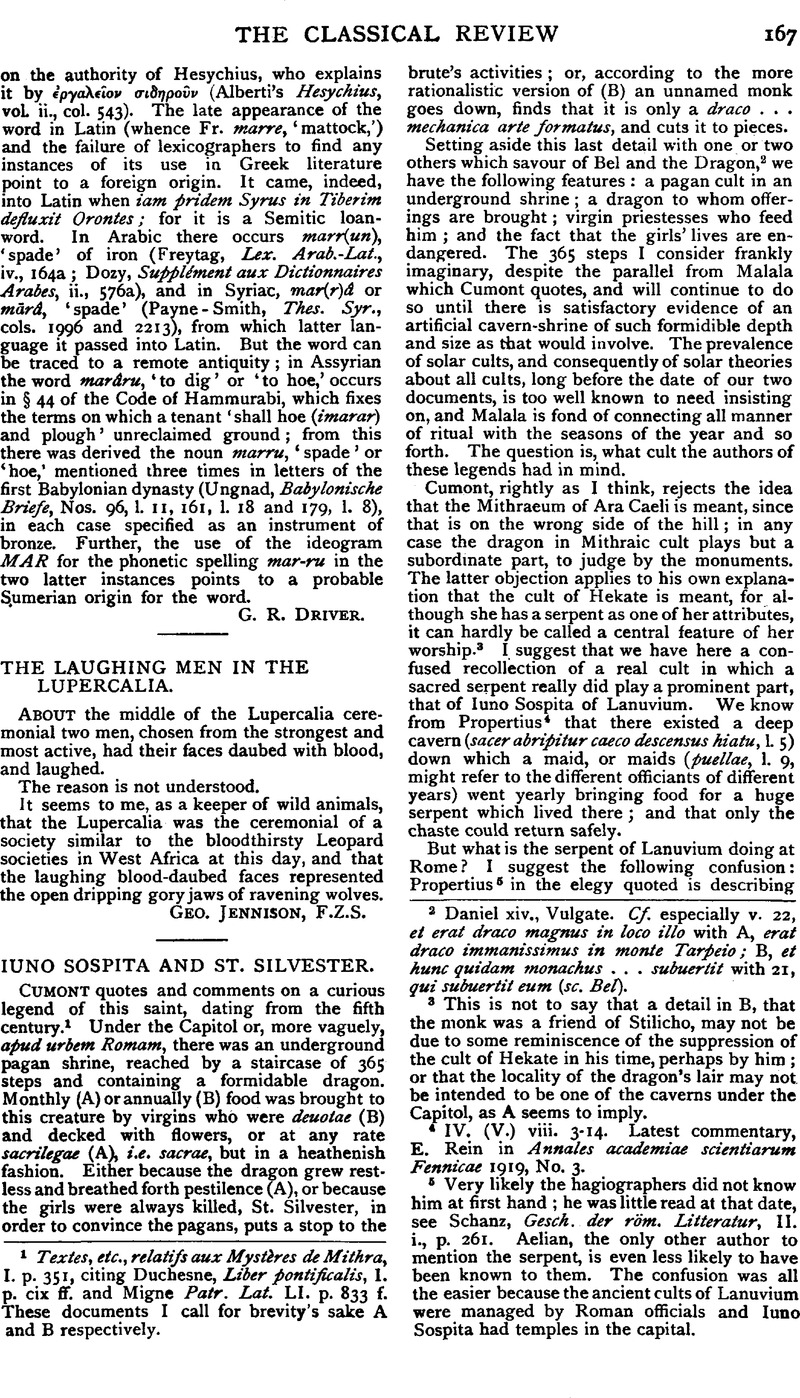Article contents
Iuno Sospita and St. Silvester
Published online by Cambridge University Press: 27 October 2009
Abstract

- Type
- Review Article
- Information
- Copyright
- Copyright © The Classical Association 1922
References
1 Textes, etc., relatifs aux Mystères de Mithra, I. p. 351, citing Duchesne, , Liber pontificalis, 1. p. cix ffGoogle Scholar. and Migne, Patr. Lat. LI. p. 833 fGoogle Scholar. These documents I call for brevity's sake A and B respectively.
2 Daniel xiv., Vulgate. Cf. especially v. 22, et erat draco magnus in loco illo with A, erat draco immanissimus in monte Tarpeio; B, et hunc quidam monachus … subuertit with 21, qui subuertit eum (sc. Bel).
3 This is not to say that a detail in B, that the monk was a friend of Stilicho, may not be due to some reminiscence of the suppression of the cult of Hekate in his time, perhaps by him; or that the locality of the dragon's lair may not be intended to be one of the caverns under the Capitol, as A seems to imply.
4 IV. (V.) viii. 3–14. Latest commentary, E. Rein in Annales academiae scientiarum Fennicae 1919, No. 3.
5 Very likely the hagiographers did not know him at first hand ; he was little read at that date, see Schanz, , Gesch. der röm. Litteratur, II. i., p. 261Google Scholar. Aelian, the only other author to mention the serpent, is even less likely to have been known to them. The confusion was all the easier because the ancient cults of Lanuvium were managed by Roman officials and Iuno Sospita had temples in the capital.
- 1
- Cited by




